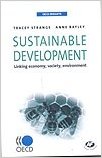Environmental discourses have been ascendant around the world in the last thirty-odd years, and the concept of sustainable development has gained a key place within these since its enunciation by the report Our Common Future (also known as the Brundtland Commission Report) in 1987. This global rise of sustainable developmentand environmentalist ideas more generallyis essentially due to two major processes. First, the actually deteriorating living spaces of humans and non-humans alike have prompted concern. These problems include air and water pollution, deforestation, lack of access to basic necessities like water and sanitation, biodiver-sity loss, and lately, global climate change. Second, and relatedly, the growing strength and activism of environmental-identity based move-ments have forced states and capital to address these issues. Sustainable development gained prominence precisely as a means to incorporate environmental challenges within state-spaces, purportedly, and as the widely cited Brundtland Commission Report states, so that they can meet the needs of the present without compromising the ability of future generations to meet their needs.
In other words, the concept seeks to bring together economic growth, social development, and environmental conservation within policy processes. This goal is clearly discernible from the title of the new OECD book, Sustainable Development: Linking Society, Economy, Environment.
This is an introductory text that encompasses several aspects of the sustainable development discourse, though it does not view it as a contested discourse, but as a self-evident necessity. The book glides through several concerns, including: the genesis of the idea; contemporary global challenges like poverty, inequality and climate change; the environmental footprints of current patterns of production and consumption; issues in the measurement of sustainability; and the role of states and civil society in promoting sustainability. At each step the book attempts to familiarize the reader with the origins, key ideas, and policy prescriptions required for the fulfillment of what it defines as sustainable outcomes.

